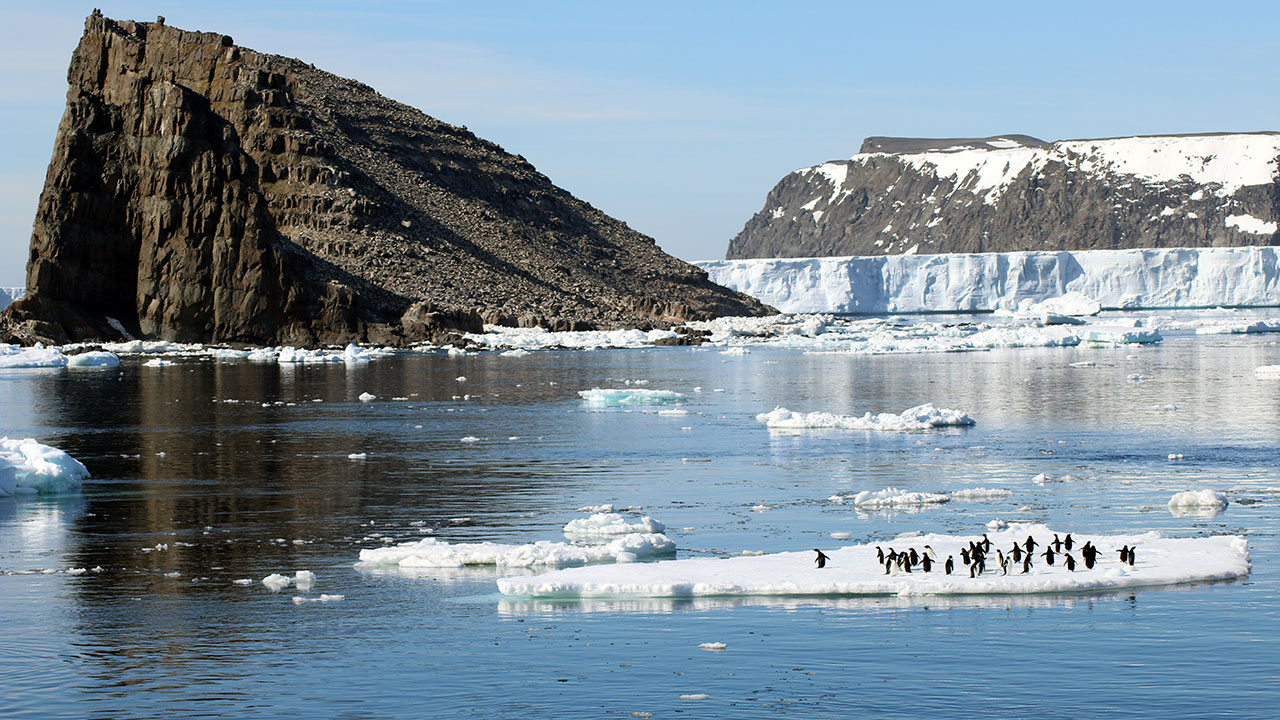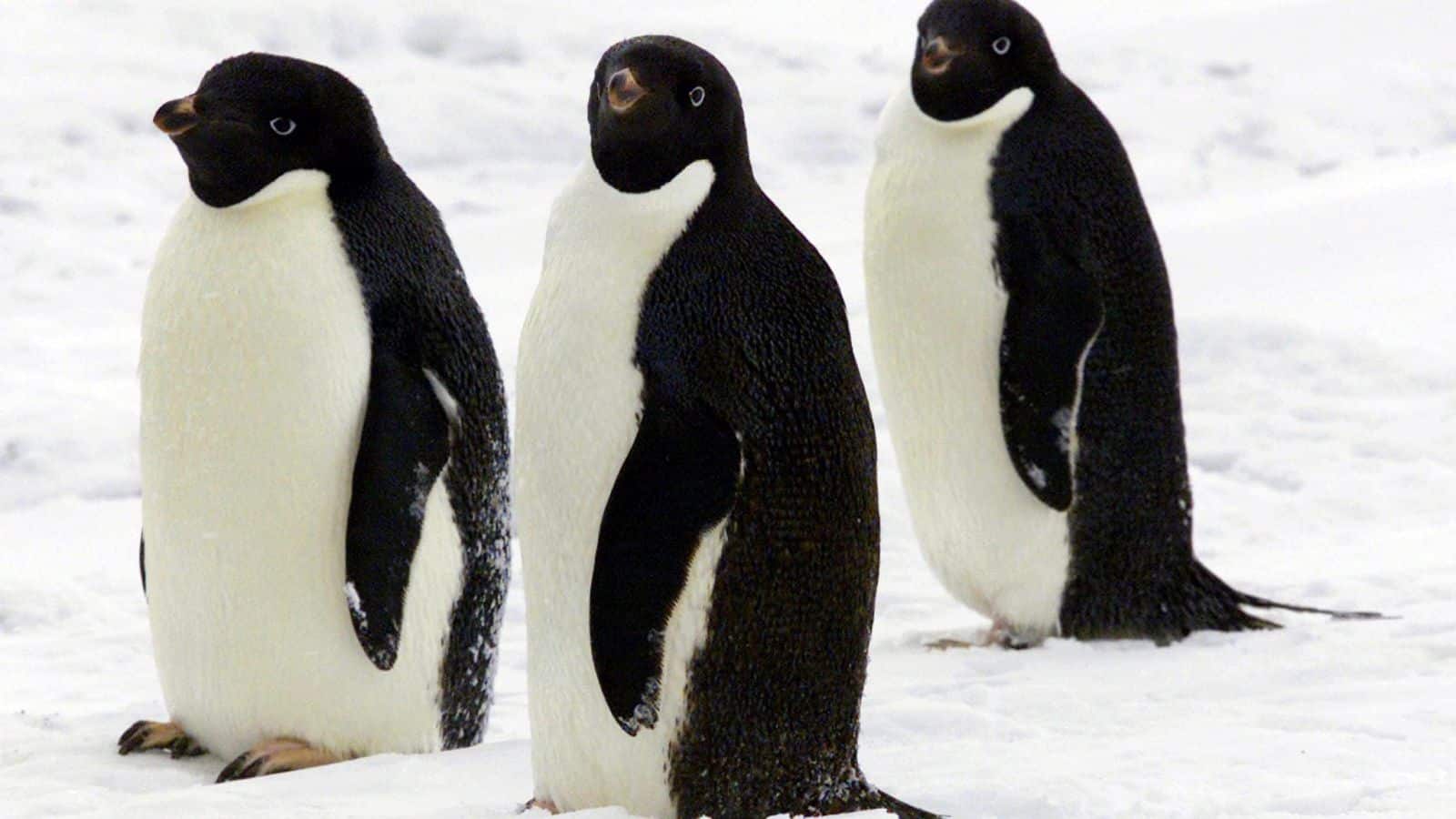Patch Spotted from Space Leads to Discovery of Penguin “Super-Colony”
Monitoring populations is essential to species conservation, and can be used to identify threats or changes in conservation status. Indeed, central to the Convention on Biological Diversity and related conservation measures is the assumption that we can quantify species diversity, abundance, and geographic distribution.
Numerous studies now suggest that Adélie penguin (Pygoscelis adeliae) populations are undergoing dramatic shifts in abundance, with marked declines along most of the Western Antarctic Peninsula (WAP) and associated sub-Antarctic Islands and sharp increases in the Ross Sea and Eastern Antarctica.

And now, thanks to a satellite and some drone footage, researchers have been able to identify a previously undiscovered super-colony of more than 1.5 million Adélie Penguins on the remote Danger Islands off the coast of Antarctica.
Scientists were able to discover this hitherto unknown super-colony of penguins because the ice birds left
a trail of poop that was so incredibly large that it was seen from a NASA satellite in space. Talk about leaving your mark.
“Until recently, the Danger Islands weren’t known to be an important penguin habitat,” says co-PI Heather Lynch, Associate Professor of Ecology & Evolution at Stony Brook University. These supercolonies have gone undetected for decades, she notes, partly because of the remoteness of the islands themselves, and partly the treacherous waters that surround them. Even in the austral summer, the nearby ocean is filled with thick sea ice, making it extremely difficult to access.
Yet in 2014, Lynch and colleague Mathew Schwaller from NASA discovered telltale guano or bird poo stains in existing NASA satellite imagery of the islands, hinting at a mysteriously large number of penguins.
To find out for sure, Lynch teamed with Stephanie Jenouvrier, a seabird ecologist at WHOI, Mike Polito at LSU and Tom Hart at Oxford University to arrange an expedition to the islands with the goal of counting the birds firsthand. The team boldly set off on the expedition into the remote islands and found a “hotspot” of Adelie penguins previously unknown to science.

Dr. Hart explains, the Danger Islands, located off of the Antarctic Peninsula’s northern tip in the northwest Weddell Sea, are so inaccessible that they usually make explorers think twice before deciding to set foot in the area. “This is called the Danger Islands for a reason,” said Dr. Lynch in a statement.
“The area is covered by heavy sea ice most of the year, and even in the height of summer it is difficult to get into this region to do surveys,” she specified.
Nevertheless, the undeterred researchers braved these daunting conditions and, by a miraculous twist of fate, ended up uncovering a staggering total of 751,527 pairs of Adelie penguins nesting on the rocky archipelago.
To complete this monumental task, the scientists used a modified commercial quadcopter drone to get a bird’s eye view of the flightless aquatic avians.

“The drone lets you fly in a grid over the island, taking pictures once per second. You can then stitch them together into a huge collage that shows the entire landmass in 2D and 3D,” said the study’s author Hanumant Singh. At least penguins can’t fly which makes parking your car in Antartica a little more comforting.
These photos were stitched together into a massive mosaic, showing the Brash, Earle, Beagle, and Heroína Islands in both two and three dimensions. Once back at the lab, the researchers used an AI in the form of a Deep Neural Network (DetectNet) to analyze the collage, searching for—and meticulously counting—individual penguin nests.

In total, they found that the Danger Island chain is home to a whopping 751,527 pairs of Adélie penguins. So at bare minimum, this region is home to 1,503,054 penguins—not including unpaired penguins and any chicks that may be scurrying around.
“Not only do the Danger Islands hold the largest population of Adélie penguins on the Antarctic Peninsula, they also appear to have not suffered the population declines found along the western side of Antarctic Peninsula that are associated with recent climate change,” says study co-author Michael Polito, a marine biologist at Louisiana State University.
The Danger Islands are likely to remain an important breeding location for penguins under projected climate change; researchers are now fighting for special consideration of the Adélies in the negotiation and design of marine protected areas in the region.






























